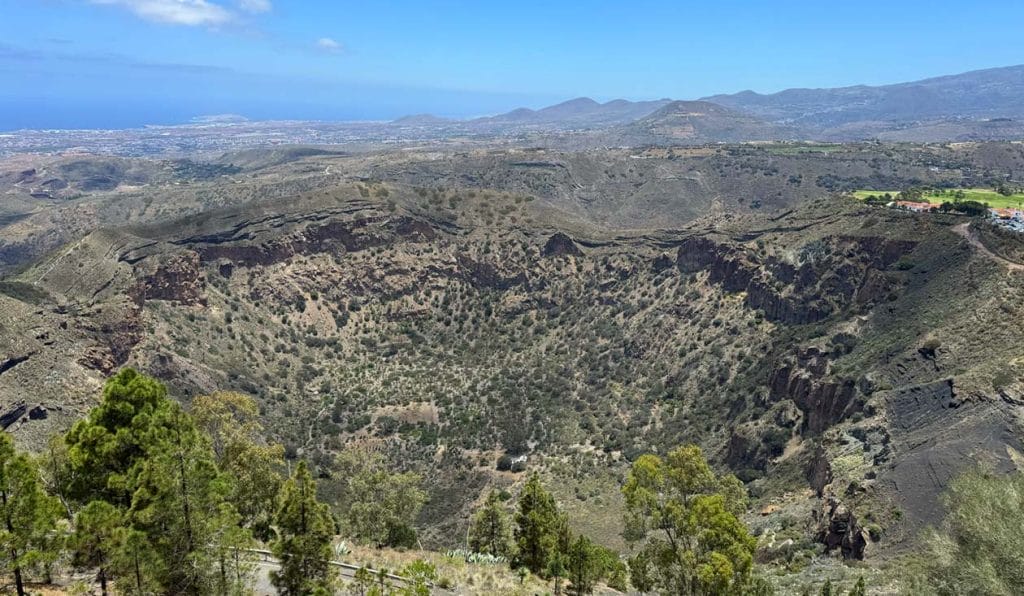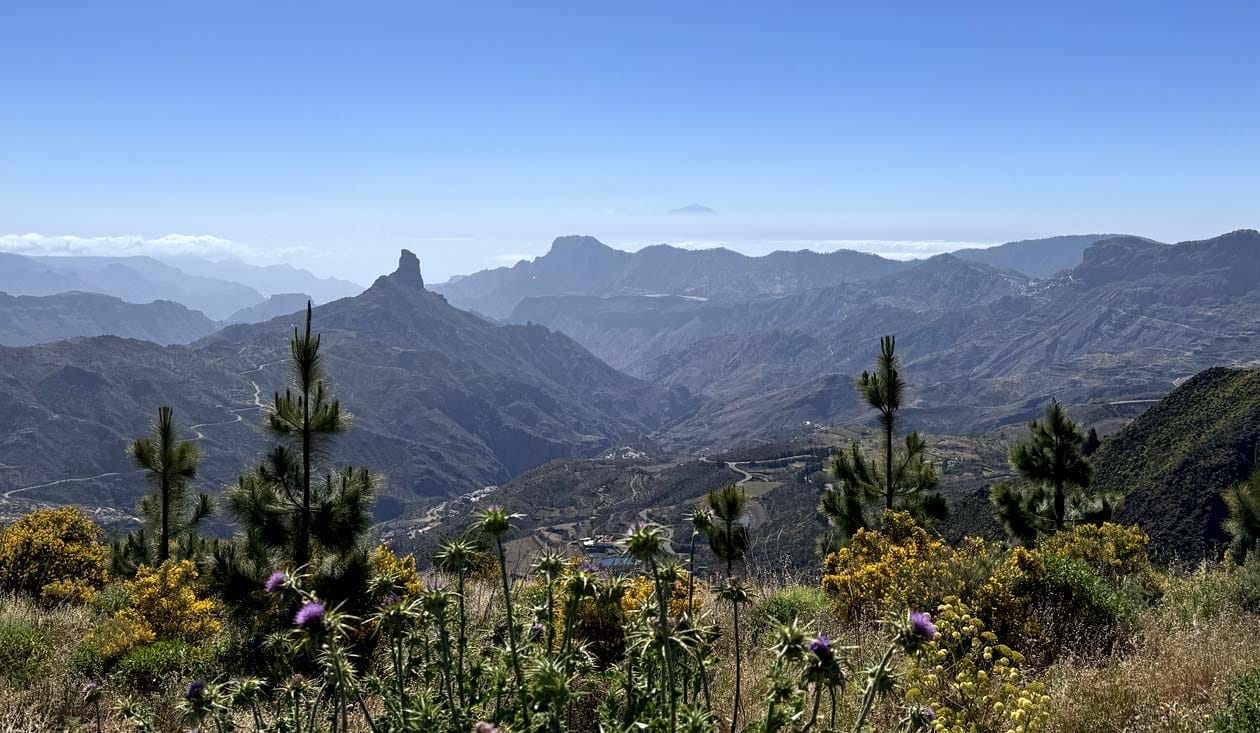Did You Know Gran Canaria Has 3 Types of Volcanic Calderas?
Most people picture volcanoes as towering cones erupting in spectacular bursts of lava. But here in Gran Canaria, the story of volcanic activity is far more layered, ancient, and awe-inspiring. This island doesn’t just have volcanoes — it harbors three distinct types of volcanic calderas, each shaped by different geological forces, each holding a key to understanding how this land came to be.
From explosive collapses to slow erosion and hidden subsidence, the volcanic heart of Gran Canaria beats in rhythms that go back millions of years — and it still resonates in every step we take across its trails.

What Is a Volcanic Caldera?
A caldera is not your typical volcanic crater. It’s a large, often massive depression formed after a volcano erupts and the emptied magma chamber causes the surface to collapse inward. But not all calderas are formed in the same way — and Gran Canaria is a unique case where you can witness three different formation processes on a single island.
These calderas aren’t just geological anomalies — they are natural amphitheaters of time, revealing the power of earth, the cycle of destruction and creation, and the story of human adaptation to volcanic terrain.
Let’s explore them.
🌋 1. Explosive Caldera – Caldera de Bandama
Located just 20 minutes from Las Palmas, Bandama Caldera is a striking sight: a vast, 200-meter-deep bowl formed by a phreatomagmatic explosion — when rising magma met underground water, creating a violent eruption that blew the top off the volcano.
Today, this caldera is a protected natural monument. Its circular shape, steep walls, and inner trails make it one of the most accessible examples of explosive volcanism in the Canary Islands. From the top, you can see vineyards growing on volcanic ash — a reminder that even destruction gives way to fertility and life.
🌿 Climbo Insight: Bandama isn’t just a photo stop — it’s the prologue to Gran Canaria’s volcanic narrative. Standing on its rim connects you to the island’s raw beginnings.
🪨 2. Erosional Caldera – Tejeda Basin
Moving inland, the Tejeda Caldera is a different story. This isn’t the result of a single eruption, but of millions of years of erosion sculpting a volcanic massif. Water, wind, and time wore down ancient lava flows, leaving behind cliffs, ridges, and towering monoliths like Roque Nublo and Roque Bentayga.
Tejeda is often referred to as the heart of the island — geographically, culturally, and spiritually. Here, geology and mythology converge. Ancient aboriginal settlements, sacred rocks, and old walking paths intertwine with the landscape in a way that words can’t fully capture.
🧭 Climbo Insight: Hiking in Tejeda isn’t about getting from point A to B. It’s about reading the terrain — understanding how the earth was shaped, how people lived with it, and how we still walk in their footsteps.
🌲 3. Subsidence Caldera – Los Marteles
Lastly, in the island’s highlands lies Los Marteles Caldera, a more subtle, yet equally fascinating formation. This subsidence caldera was created when magma drained away beneath the surface, and the overlying rock gently collapsed, forming a broad, shallow basin.
Surrounded by pine forests and high-altitude meadows, Los Marteles is now a biodiversity haven. The terrain is gentler, but the feeling is powerful — walking here, you feel the earth’s quiet transformation, the slow motion of geological time still unfolding beneath your feet.
🌱 Climbo Insight: Los Marteles is an ideal place to connect with nature’s cycles — where geology, botany, and silence come together in perfect balance.
More Than Rocks: A Living Island
What makes Gran Canaria’s calderas truly special is not just how they were formed — but how they continue to shape life around them.
These aren’t dormant relics. They are living systems, home to endemic species, ancient trails, sacred sites, and rural communities that have learned to work with the land, not against it. From terraced farms and volcanic soils to cave houses and oral traditions, the volcanic heritage of Gran Canaria is deeply human, too.
As part of Climbo Tours, we don’t just observe these landscapes — we interpret them. Our guides share not only the science behind the terrain but also the legends, stories, and cultural connections that bring each place to life.
🧭 Want to Experience It Yourself?
If you’re curious to explore Gran Canaria’s volcanic legacy in depth, join us on our Volcano Heart Tour — a journey that traverses all three types of calderas, combining geology, breathtaking landscapes, local flavours, and a sunset you’ll never forget from the island’s highest peak.
Because Gran Canaria isn’t just an island.
It’s a volcano, a memory, and a living pulse of Earth itself.
Ready to hike the soul of the island?
Let Climbo Tours take you to the very heart of Gran Canaria.
🌐 Visit climbo.rocks to explore all tour options
📩 Email booking@climbo.rocks for personalized assistance
📞 Or call us at (+34) 611 518 815 to speak with our team







